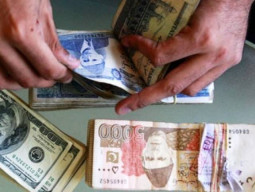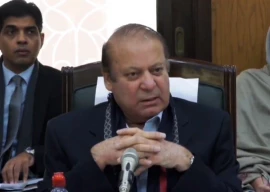
ISLAMABAD: The finance ministry is eyeing a negligible current account deficit at the end of the Pakistan Tehreek-e-Insaf (PTI) government’s term, which will require a 100% increase in the existing savings rate - an assumption that appears highly unrealistic.
The Ministry of Finance discussed on Thursday its macroeconomic projections with key stakeholders, including the State Bank of Pakistan (SBP), minister for planning and development and minister for power. The projections are part of the macroeconomic framework draft that Finance Minister Asad Umar wants to unveil on January 23.
These apparently unrealistic assumptions were made the day when the SBP reported that the current account deficit shrank only 4.4% or $370 million to $8 billion during the July-December period of the current fiscal year. The current account deficit in December alone was $1.66 billion, which was nearly $500 million higher than the ministry’s own estimate.
According to a participant of the meeting, the current account deficit of December has punctured the macroeconomic projections of the finance ministry.
Sources told The Express Tribune that there were glaring contradictions in the assumptions that the finance ministry considered to project a negligible current account deficit by 2022-23.
The sources said the finance ministry wanted to contain the current account deficit at around 0.2% of gross domestic product (GDP) by 2022-23. However, this would require increasing the current, around 10% of GDP, savings rate to nearly 20% by 2023.
They said investment would remain below 20% of GDP due to the fact that the finance ministry had projected 6% economic growth for 2022-23.
The doubling of the savings rate without increasing the investment would lead to a situation where even the economic growth of 6% will be unattainable, according to a participant of the meeting. This means that the PTI government would not be in a position to create 10 million jobs.
Minister for Planning and Development Khusro Bakhtyar told journalists on Wednesday that creating 10 million jobs would require at least 7% economic growth by 2023.
Prominent economist Dr Hafiz Pasha has also declared the finance ministry’s macroeconomic framework unrealistic after reviewing it last week.
The ministry was preparing the macroeconomic plan to present it to Prime Minister Imran Khan. The premier had directed the ministry to bring its plan at the earliest during a meeting that had also been attended by PTI’s former secretary general Jahangir Tareen.
The finance ministry did not allow senior officials of the planning ministry to attend the meeting, depriving Khusro Bakhtyar of technical advice.
The finance minister had invited the planning minister to attend the meeting so that both ministries could converge their plans. The planning ministry would now give a presentation to the finance ministry.
Besides the Ministry of Finance, the planning ministry was in the process of preparing a five-year plan. Asad Umar had desired that there should be convergence between both the medium-term macroeconomic framework and the five-year plan. However, so far both the ministries were far away from any convergence.
Against the finance ministry’s desire to contain the budget deficit to less than half a percentage of GDP by 2023, the planning ministry was projecting a current account deficit of around 2.5% of GDP. This was due to the fact that the planning ministry wanted the average economic growth target to be 5.8% for the next five years and the final year target at 7%.
According to the sources, the finance ministry was also projecting current account deficit of less than 1% of GDP by 2021-22. The ministry believes that the stabilisation measures would soon start giving results.
The government has put in place monetary, exchange rate and fiscal measures, due to which the current account deficit is on strong decline path, claimed Dr Najeeb Khaqan, the spokesman of the finance ministry. He said the impact of import compression was fully visible.
Since July, the central bank has increased the interest rate by 4.25% to 10% and devalued the currency by 15.4%, aimed at containing the aggregate demand in the economy.
There is still no decision whether the government should continue with stabilisation polices or go for measures to boost the economic growth rate. During the first five months, the large scale manufacturing sector faced nearly 1% contraction.
Published in The Express Tribune, January 18th, 2019.
Like Business on Facebook, follow @TribuneBiz on Twitter to stay informed and join in the conversation.












































COMMENTS
Comments are moderated and generally will be posted if they are on-topic and not abusive.
For more information, please see our Comments FAQ